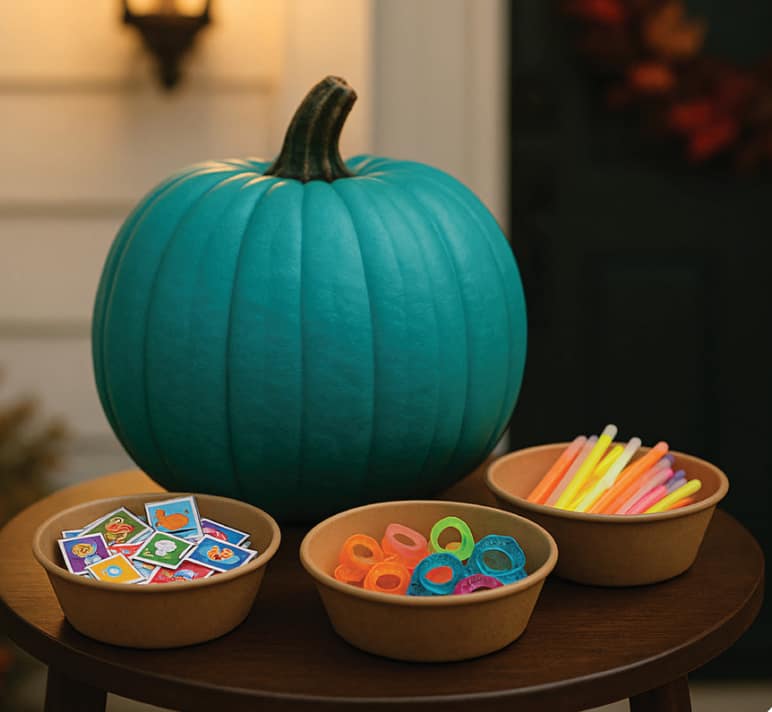Halloween can be scary for all the wrong reasons when your child is one of the nearly 6 million kids in the US with a potentially life-threatening food allergy. That’s 1 in 13 children, or approximately 49,000 children in the Portland metro area.*

For them, what should be a carefree night of trick-or-treating with friends could end with a visit to the ER, or worse. And it’s not only Snickers and Peanut M&Ms that can mean trouble. Of the foods that cause 90% of allergic reactions (dairy, peanuts, tree nuts, wheat, soy, egg, fish and shellfish) all but the last three are regularly found in Halloween candy.
Enter the Teal Pumpkin Project, a nationwide campaign that aims to make Halloween safer and more inclusive. It started in Tennessee when allergy mom Becky Basalone painted a pumpkin teal, the color for food allergy awareness, and put it on her porch. It was a sign to trick-or-treaters that non-food treats like googley eyes and spider rings were available if a child couldn’t eat the candy she was passing out. Thanks to social media, and later the efforts of Food Allergy Research and Education (FARE), this idea has spread across the country, all the way to Portland.
The Teal Pumpkin Project also benefits children with other medical conditions. Chrystal McMahon, Beaverton mother of a young child with type 1 diabetes, is thrilled whenever she sees a home with a teal pumpkin. “It means so much to my family to know that children like our son are thought of and can safely be included.”
How to Participate in the Teal Pumpkin Project:
- Display a teal pumpkin. You can buy teal craft pumpkins or paint a real one.
- Post a sign explaining what it means. Free printable signs are available at www.tealpumpkinproject.org.
- Put inexpensive, non-food treats in a separate bowl to avoid cross contact with allergens that may be present on candy wrappers.
- Add your home to FARE’s Teal Pumpkin Project map so trick-or-treaters searching for non-food treats know where to go.
- Consider offering everyone a choice between candy and a non-food treat, so kids with special needs don’t have to speak up and stand out.
*according to the Center for Disease Control and the US Census
